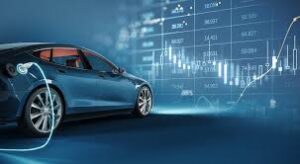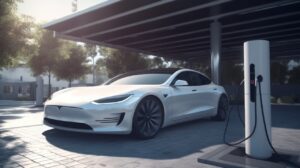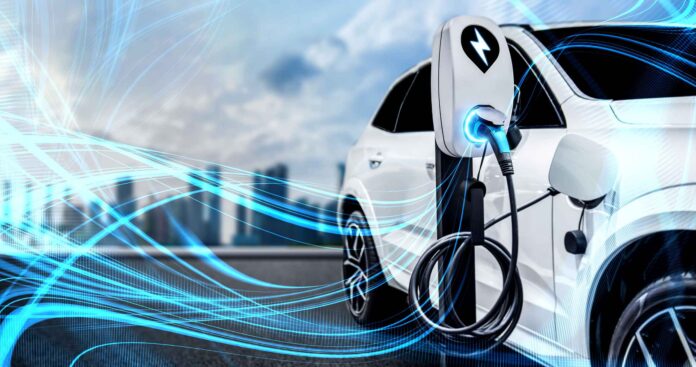In recent years, electric vehicles (EVs) have swiftly transitioned from niche products to mainstream automotive players, revolutionizing the industry and consumer habits alike. Driven by the convergence of environmental concerns, technological advancements, and governmental support, EVs are rapidly gaining traction, with their popularity soaring globally. This meteoric rise reflects the broader trend towards sustainable mobility, making EVs a critical component in reshaping the future of transportation.

- Environmental Drivers of the EV Boom
One of the primary factors fueling the rapid adoption of EVs is the growing global awareness of environmental issues. As concerns about climate change intensify, the need for cleaner, greener transportation alternatives has become urgent. Traditional internal combustion engine (ICE) vehicles contribute significantly to greenhouse gas emissions, worsening air pollution and driving global warming. In contrast, electric vehicles produce zero tailpipe emissions, making them a crucial solution for reducing the automotive industry’s carbon footprint.
Countries worldwide have set ambitious goals to reduce emissions, and the transition to EVs plays a vital role in achieving these targets. Governments are encouraging this shift by implementing policies such as subsidies, tax incentives, and stricter emissions regulations for ICE vehicles. For instance, several European countries have committed to banning the sale of new gasoline and diesel vehicles by 2035, pushing automakers and consumers toward electric mobility.
- Advances in Technology
 Technological innovation has been a major catalyst in the rise of EVs. Significant advancements in battery technology have addressed some of the most significant hurdles to EV adoption—namely, driving range and charging times. Modern lithium-ion batteries have become more efficient, allowing EVs to travel greater distances on a single charge. Some of the latest models can now cover over 300 miles (480 km) per charge, which makes them more practical for everyday use and long-distance travel.
Technological innovation has been a major catalyst in the rise of EVs. Significant advancements in battery technology have addressed some of the most significant hurdles to EV adoption—namely, driving range and charging times. Modern lithium-ion batteries have become more efficient, allowing EVs to travel greater distances on a single charge. Some of the latest models can now cover over 300 miles (480 km) per charge, which makes them more practical for everyday use and long-distance travel.
Additionally, the charging infrastructure is expanding at an unprecedented pace, with fast-charging stations popping up across highways and urban centers worldwide. Fast chargers can replenish an EV’s battery in a matter of minutes, dramatically reducing the waiting time compared to early models that required hours for a full recharge. This infrastructure growth enhances the convenience of owning and driving electric vehicles, eliminating range anxiety—a key concern for potential buyers.
Moreover, innovations in electric motor efficiency and lightweight materials have improved vehicle performance, making EVs not only eco-friendly but also highly competitive in terms of acceleration, handling, and overall driving experience. The integration of smart technologies such as autonomous driving features and vehicle-to-grid capabilities further boosts their appeal, particularly to tech-savvy consumers.

- Market Growth and Consumer Trends
The EV market is experiencing explosive growth. According to recent reports, global EV sales have surged, with 2023 seeing over 10 million units sold—a 40% increase compared to the previous year. This surge is not confined to just one region; countries like China, the United States, and several European nations are leading the charge in EV adoption. China, the largest market for EVs, accounts for nearly half of global sales, driven by a combination of government policies and strong domestic manufacturers.
Consumer attitudes are also shifting. EVs are no longer viewed as luxury items for the environmentally conscious elite. The growing variety of models, ranging from affordable compact cars to high-end luxury vehicles, has made them accessible to a wider audience. Automakers such as Tesla, Nissan, Volkswagen, and even traditional giants like Ford and General Motors are heavily investing in EV production, signaling that electric mobility is the future of the automotive industry.
- Challenges and the Road Ahead
Despite their rapid rise, EVs still face challenges. The upfront cost of electric vehicles remains higher than that of ICE vehicles, although this gap is narrowing as battery prices continue to fall. Additionally, the environmental impact of battery production, particularly the mining of materials like lithium and cobalt, has raised concerns about the sustainability of the entire EV supply chain. However, efforts are underway to develop more sustainable battery technologies, including solid-state batteries and improved recycling processes.
Looking ahead, the future of electric vehicles seems bright. With continued advancements in technology, increasing government support, and a growing demand for sustainable transportation, EVs are poised to dominate the automotive landscape in the coming decades. As the world continues its push towards a greener future, electric vehicles are not just a trend—they represent a fundamental shift in how we think about mobility.

